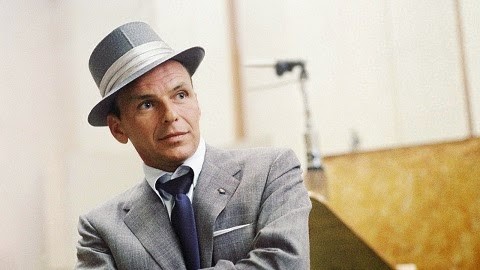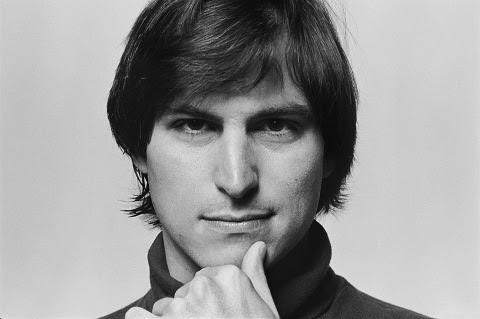Post-production facility continues its eight year collaboration with Alex Gibney and Jigsaw New York with two ambitious documentaries for HBO and CNN.
NEW YORK—April 22, 2015—Earlier this month, final mastering for Sinatra: All or Nothing at All and Steve Jobs: The Man in the Machine, the latest documentaries from Academy Award-winning producer/director Alex Gibney, was completed at Technicolor PostWorks New York in preparation for their television debuts on HBO and CNN, respectively. Editorial conforming and final color grading for both projects was performed by a small team of artists and technicians working under the direction of Technicolor PostWorks Vice President/Creative Services Ben Murray in close collaboration with Gibney’s production team and editors from Jigsaw, New York.

The same line-up of talent had worked together on a more than a half dozen previous documentaries over the past eight years, including, most recently, Going Clear: Scientology and the Prison of Belief, whose post schedule overlapped the two latest projects. Over the course of that time, Technicolor PostWorks, Gibney’s production team and Jigsaw, have developed a tight creative rapport and a unique workflow that facilitates the completion of these complex productions with razor-sharp efficiency.
“We have it down to a science,” says Murray. “We have an all-Avid workflow that we have honed with Jigsaw and the Gibney team, and it works very well. It’s been a great relationship.” Murray’s team included, for Sinatra, colorist Jack Lewars and finishing editor Allie Ames; and, for Jobs, Lewars and finishing editor Jeff Cornell.
Sinatra: All or Nothing at All, airing on HBO as a 4-hour mini-series, is the first documentary about the late singer produced with the authorization of his estate. It tells the story of Sinatra’s life and career leading up to his famous 1971 “retirement concert” in Los Angeles. Unusually, the documentary is composed almost entirely from archival material—there are no new, on-camera interviews. Rather recordings of Sinatra himself provide the narrative thread with the never-before-seen concert material used as a framing device.
The massive research effort for the project was led by Executive Producer Blair Foster, who has fulfilled a similar role on a number of Gibney documentaries. She and her team combed through books, magazines, television shows and news broadcasts, and also reached out to Sinatra’s surviving friends, family and colleagues. “We want everything,” Foster says of her research methodology. “Not just photographs and video, but also the outtakes and contact sheets. We are persistent, but it’s all in the name of the greater good.” The project was produced for Jigsaw by Erin Edeiken.

The material collected by Foster was passed on to editors Sam Pollard, Ben Sozanski, Anoosh Tertzakian and their assistants at Jigsaw who worked with Gibney in shaping it into a cohesive story. Along with the creative work of editing the documentary, technical processing was conducted at Jigsaw, including scanning photographs and converting video material.
Jigsaw prepared a conformed version of the documentary in-house before passing it onto Technicolor PostWorks for final editorial adjustment and color grading. Murray suggested this unusual workflow based on past experience. Gibney and his team want the freedom to continue making editorial changes virtually to the point of delivery and so it is more efficient and economical if as many of those changes as possible can be effected at the editorial house.
“It allows for more flexibility to make changes,” explains Jigsaw post-production supervisor Kelley Cribben. “Once the foundation is done, we turn it over to Ben’s team. They do the archival clean-up, formatting, titling, opticals and some digital effects.”
“There were a large number of stills that we did moves on,” adds Technicolor PostWorks finishing editor Allie Ames. “We also received a significant amount of PAL and NTSC footage that we needed to make look as good as possible.”
Despite the conforming that was done at Jigsaw, additional editorial changes were required after the hand-off to Technicolor PostWorks. Last minute changes were predicated by legal or rights issues, or because better quality archival material had been found and scenes need to be swapped out.
Such editorial amendments did not, however, slow the finishing process. “Every project comes down to the wire,” notes Foster, “but you would never know that at Technicolor PostWorks. Ben and his team are so cool, calm and collected.”

A very different American icon is profiled in Steve Jobs: The Man in the Machine. The 2-hour documentary, an evocative portrait of the life and work of Steve Jobs that re-examines his legacy and our relationship with the computer, screened at the South by Southwest Film Festival in advance of its television premiere on CNN.
The post-production workflow for Jobs was similar to the one used for the Sinatra documentary (Jobs was edited for Jigsaw by Michael J. Palmer and produced for Jigsaw by Viva Van Loock), but the particulars were distinctly differently. As Jobs was born 40 years later than Sinatra, archival material documenting his life is of more recent vintage and derives from more modern types of sources. So fewer items needed significant post-production processing. Additionally, the Jobs documentary includes newly produced interviews with people who knew and worked with him in life.
All that made for a different finishing process. One notable difference involved color grading. Whereas Sinatra, with its mix of black & white and color material, was given a naturalistic grade, Jobs has a more stylized look, particularly in its archival segments. “We colored it in a very electronic way,” recalls Technicolor PostWorks colorist Jack Lewars. “The colors are almost hyper-saturated, especially the blues. On computer screens, the blues are almost bleeding out of their boundaries.”
Lewars says the unusual color treatment has a narrative purpose and is meant to subtly underscore Jobs’ personality and the digital revolution that he helped bring about. “It feels like a throwback,” Lewars says. “While we are describing someone who modernized the world, he’s presented in a very low-fi setting. The contrast works really well.”
With the two documentaries finishing almost simultaneously, organizational issues were of paramount importance. Cribben notes that drives containing elements were exchanged between Jigsaw and Technicolor PostWorks often several times a day and required careful management. “We were constantly emailing instructions,” she recalls. “Every time we made a turnover, there was an email thread explaining every nuance of what needed to be done. Ben’s team responded immediately.
“I’ve been working with this group for eight years and it’s become a very efficient, tight ship.”
Topics: Press Release City
Did you enjoy this article? Sign up to receive the StudioDaily Fix eletter containing the latest stories, including news, videos, interviews, reviews and more.